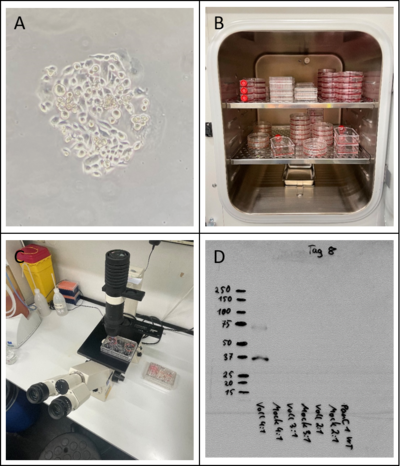Stable cell transfection
Class II tumor suppressor genes (C2TSGs) are frequently silenced in cancer cells by DNA promoter hypermethylation. To analyze the function of novel putative C2TSGs, cancer cell lines stably expressing the candidate gene are established. This is done by transfection using a vector containing the gene of interest and the genetic information for an antibiotic resistance. As a result, only successfully transfected cells will survive under selection pressure and start forming colonies after very thin cell seeding. After growing back these clones to considerable numbers, RT-PCR and Western Blot are performed to confirm successful integration and expression on mRNA and protein level. Generated stable clones containing either the gene of interest or empty vector (as control) are then subjected to various in vitro assays (see there) to learn more about C2TSG function in suppressing cancer.
A) A forming colony of PANC1 cells, a pancreatic cancer cell line; B) Growing back from single cell clones up to the amount of whole petri dishes requires different sizes of cultivation wells. Different dish sizes can be found in this cell culture incubator; C) Transfected cells are getting monitored under the microscope regularly to observe their confluence; D) Typical western blot used to demonstrate protein expression of the gene of interest in transfected cells.




